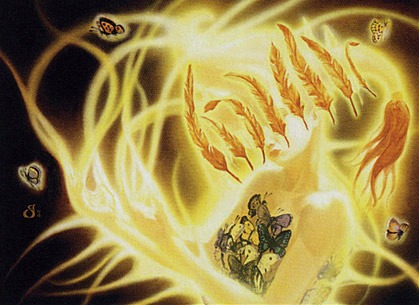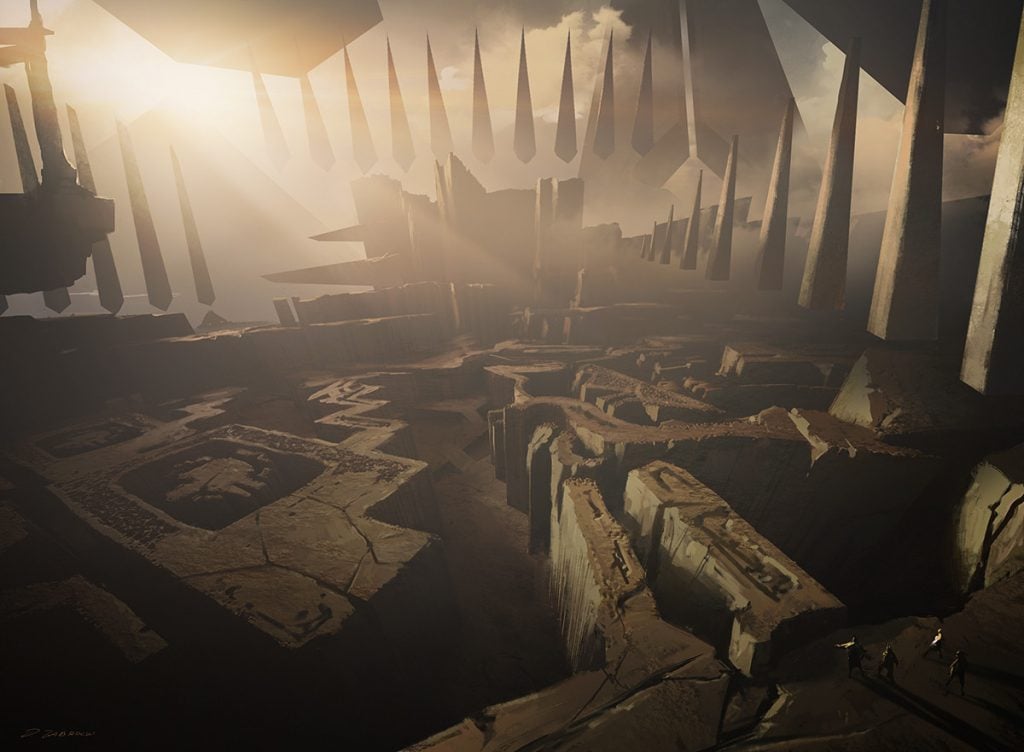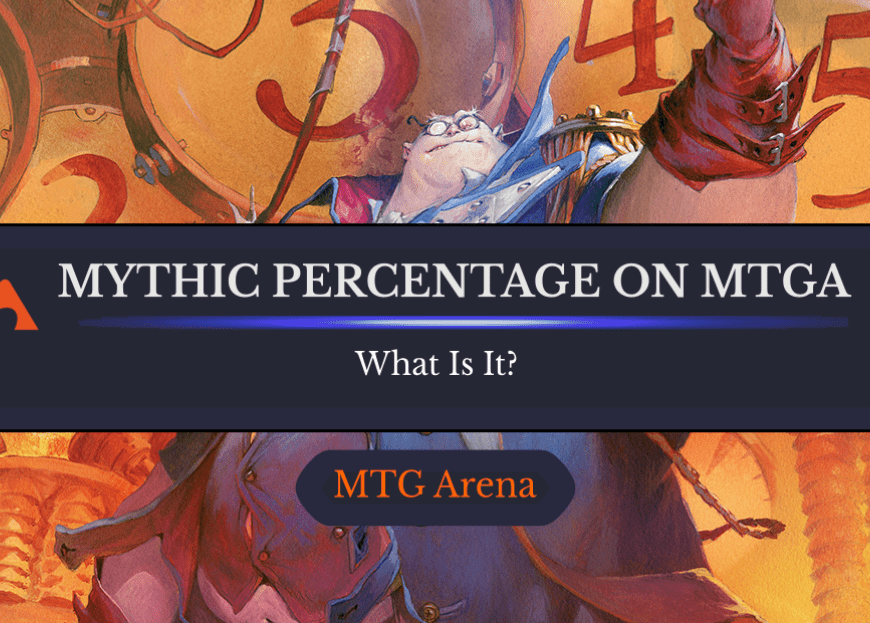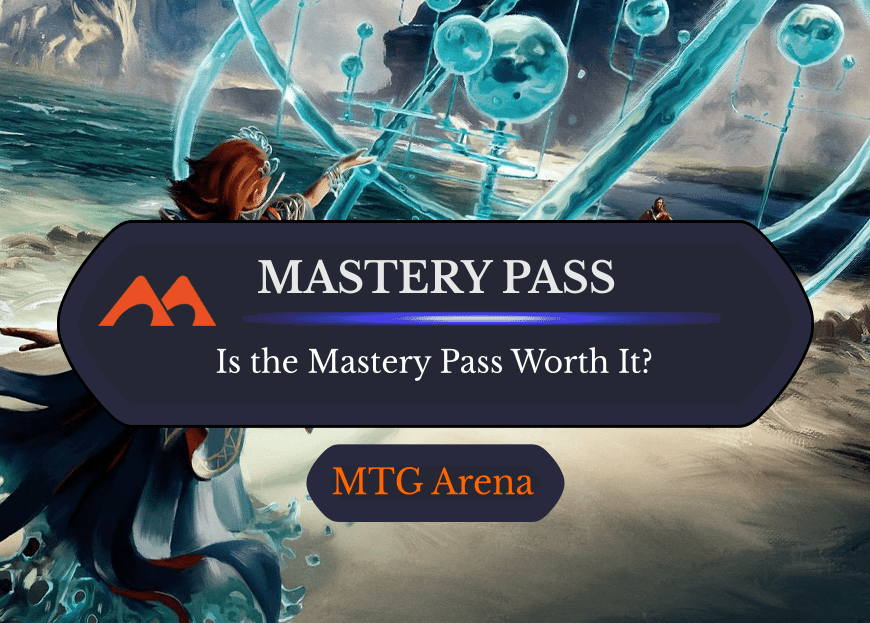Last updated on December 28, 2023

MTG is growing. From a digital perspective we know for sure, and signs point to this translating into tabletop magic as well, with Arena becoming the primary introductory channel for a new Magic player’s journey.
What new players may have experienced with competing digital titles like Hearthstone or Gwent before to their foray into Magic will have shaped their expectations of TCG gameplay to be…. rather different than what they’ll get with MTG. Among a bunch of other differences, Magic’s competitors have all provided a more “solved” solution to mana and resource management when compared to the land system that Magic uses.
For tenured players, the ideas of mana flood—drawing too much land—and mana screw—not drawing enough land—is just something that comes with playing our favorite game. But, when it comes to the new player experience and the expectations for these new groups of players, it becomes extremely problematic that mana resources of competing titles are managed without RNG (Random Number Generation) being a factor.

Flooded Strand | Illustration by Véronique Meignaud
Specifically, you don’t draw your access to mana in games like Hearthstone or Legends of Runeterra (LoR), you just get an additional point each turn until you have the maximum value. With all of the above for context, the effects of flood and screw become a serious point of frustration, managing the number of non-games that can occur. Especially in the context of new player experience.
It’s a reasonable expectation for a Hearthstone or LoR convert to simply uninstall Arena if this becomes too much of an issue in their initial play experiences. They’ll only get more and more typical as the game moves to additional operating systems, with Arena launching on Mac OS recently, and the soon-ish mobile application launch that is expected.
The solution implemented by WotC is what is referred to as the “hand smoothing algorithm.” This is a tool implemented in BO1 formats which “improves” the initial lands drawn by a player to be better than what is mathematically average for the deck being used. The tool does this by comparing the number of lands in the deck and the average CMC for the deck (among a range of other factors) and reducing the volume of extreme results (either 0-1 lands or 5-7 lands) that would be given using a purely random system (like tabletop Magic) and all BO3 Formats.

Pure Intentions | Illustration by Randy Gallegos
What is Hand Smoothing and How Does It Work
Here’s how WotC’s former MTGA Game Director explained hand smoothing back in May 2018:
“The goal of the system is to reduce the number of mulligans and “non-games” in Bo1 matches without significantly altering optimal deck construction, such that there is no need to maintain a best-of-one (Bo1) and Bo3 version of the same deck. In particular, we want to reduce the number of new-to-Magic players that bounce off the game due to frustrating mulligans and mana issues early in their experience, especially those coming in from other games where there is no variance in the mana system.”
Chris Clay
Similarly, here’s a quote from Arena’s (also former) Senior Designer around the same time:
“The system draws an opening hand from each of two separately randomized copies of the decks, and leans towards giving the player the hand with the mix of spells and lands (without regard for color) closest to average for that deck.”
Ryan Spain
What “leans towards” actually means is hotly debated within the community, and twitter user Sierkovitz recently released some interesting findings on the algorithm using game data provided by LordsofLimited:
- In a 17-land deck, 99.25% of hands were smoothed to contain 2, 3, or 4 lands vs. the expected rate of 79.4% in a purely random distribution.
- Opening hands are much more consistent, so aggro decks gain a slight advantage in the BO1 environment.
- In a 17-land deck, there is a reduced risk of flooding, with only a 2% chance to draw 8 lands by turn 6 vs. a 5% chance in a randomized environment. This implies the algorithm also operates for draws and not just the mulligan phase as previously thought.

Work a Double | Illustration by Carl Frank
Why We Need an Algorithm
I want to make the following assertions before we go any further:
- It’s important for new players to always be entering the pool of active players;
- BO1 on Arena is the most accessible constructed format for new players for many reasons, but this is mostly due to the nature of sideboard cards requiring additional Wildcards to operate optimally, and the need for BO3 decks to be less linear. So, having play-around effects and additional information from game one increases the complexity of the game and the answers (i.e., rare Wildcards) needed.
- When compared to modern digital card games, the use of land in MTG can be problematic for managing a new player experience. These new players’ point of reference is very different from tenured MTG players.
- The mature stages of a Magic player on both Arena and in tabletop formats will more often than not see them move to BO3 formats when their useable card pool (Constructed) and experience level (Limited and Constructed) reach a certain point.
- BO1 formats don’t represent a significant subset of competitive Magic events and so changes made in this environment can’t disrupt the integrity of competitive formats more broadly. Day 1 of the Arena Open has been the only competitive event where BO1 has been used in recent memory).
- Reducing the number of non-games created by unlucky land draws would improve the new player experience.
- The use of the BO1 hand smoothing algorithm is primarily a tool to subtly improve the new player experience without altering or destroying the competitive integrity of the game.
I think these assertions best explain why WotC and the arena team have implemented this tool in such a way, with the overall goal to maximize the enjoyment of the game for new players and their access to the game and card pool as they enter as a new player.

New Perspectives | Illustration by Darek Zabrocki
Strategic Implications
Limited
As per Sierkovitz’s findings, we can determine with almost certainty that BO1 limited decks should be played with 16 lands instead of the tabletop usual count of 17. Aggro decks with only 14 to 15 lands will disproportionally benefit from the smoothing effects if they want to cap out at 3 lands, since the rate of flood is reduced most by this deck construction type.
Constructed
With constructed being a 60-card format (or 80 with ya boy Yorion, Sky Nomad), the math doesn’t translate directly. The general concepts will, but not to the same defined values provided. This means that aggro decks like mono red and mono green will have slightly higher consistency and win rates in the BO1 environment if the meta remains the same as BO3.

Questing Beast | Illustration by Igor Kieryluk
My personal experience with the hand smoothing algorithm is pretty minimal since I’m primarily BO3 player, but I was fortunate enough to go 7-0 in the recent Arena Open on Day 1 (sadly, we missed the money on Day 2 by just one game). While it is extremely anecdotal, I was playing the typical Fires of Invention plus Lukka, Coppercoat Outcast that was popular before it was banned to the depths of hell. This deck in particular felt great every game as I was almost always presented with three or four lands, and the deck was quite heavy in 3-, 4-, and 5-mana plays.
In short, I didn’t mulligan once and always had a turn 3 and or turn 4 play, which are the most critical turns for this deck. While it’s largely irrelevant now because of the ban, you can read up about the deck here. Side note: Fires’ has found a great home in Pioneer if you’re keen to continue the dream.
The point I’m looking to make is that opening hand consistency doesn’t just mean aggro gains an advantage. If you’re playing a deck with a modally skewed distribution (lots of 3-drops or 4-drops), then you’ll also enjoy the benefits of the algorithm to a greater extent, as Sierkovitz previously identified. The algorithm will consider both the number of lands and the average CMC.

Thought Reflection | Illustration by Chris Seaman
Competitive Integrity
Players have been pretty vocal in their expressions for the algorithm to be made public in order to understand how it effects the format specifically, rather than the best-guess scenarios that arise from data analysis like Sierkovitz’s. We’ve only seen one event, the Arena Open, where BO1 has become a factor as it was used for the Day 1 games, largely to limit/prevent time constraints. And with the Arena Open returning in August to provide players with a chance to qualify for the Zendikar Rising Qualifier Weekend, that’s just another piece on top.
With BO1 becoming a part of the direct route to the Pro Tour, the algorithm’s existence compounds issues of people gaming the system for unfair advantage. With this news only dropping in the last few days, WotC has yet to respond as to whether the algorithm will be active during the event.
Given BO1 and Arena are becoming much more prominent competitive pathways with the suspension of tabletop Magic around the world, I Ponder: would it be more appropriate to disable the algorithm for these large scale events, or to provide some sort of easing as players grind up the ranks from bronze to diamond to more appropriately emulate all other formats draw/mulligan phases?
Conclusion
WotC has introduced the hand smoothing algorithm to assist with the new player experience, which is critical in bringing fresh players into Magic. I mostly believe that the tool is successful in its execution of this goal, as it solves the problems of mana screw and mana flood with as little collateral damage as possible.
As the algorithm is proprietary, we can’t know with absolute certainty its effects on games, but there is no doubt it may become problematic as it becomes part of large prize pools and pro tour events. We’ll be watching the Arena Open closely over the coming weeks to see how and if WotC provides insight to players on measures to maintain the integrity of the game.

Surrender Your Thoughts | Illustration by Howard Lyon
Follow Draftsim for awesome articles and set updates:

6 Comments
I can’t thank you enough for this great article, brillant!
I agree that the algorithm should be made public, since we as players have no clue of the underlying statistical bias in their shuffler code. I’d also be very curious to see how mulligans how coded.
Okay, then explain to me why I mulliganed a whole hand full of lands 3 times, mullignaning down to 4, which also was only lands and 1 valakut awakening, then on turn 3 played valakut awakening and got ..NOTHING BUT LANDS.
explain that away. Literally sitting here losing with my yorian deck , dead by turn 4 CONSISTENTLY, due to only drawing lands. I don’t even have the RECOMMENED 36 lands in this deck. I am running 29 now, because any number higher than that causes me to have nothing but lands and lose every game to a non standard 10/10 dino.
this is not randomization. It is statistically improbably that the top 15 cards in my deck would be half my lands in a 91 card deck which mostly consists of 1-3 costs spells and creatures.
that is not variance. That is not proper shuffling. That is not proper randomization.
don’t believe me?
https://youtu.be/wyHnddbDosE
see for yourself.
how about instead of promoting lies you actually look into the issue and try to do something about this.
We have been complaining about this nonsense for 2 years now and nothing is done. One minute we are winning every game we play, the next minute we lost 10 games in a row due to drawing nothing but lands . I DO NOT NEED 15 LANDS ON TURN 4 I NEED ONE OF MY FREAKIN 27 REMOVAL SPELLS TO NOT DIE TO A NON STANDARD LEGAL 10/10 DINO GIVEN HASTE AND INDESTRUCTIBLE AND HEXPROOF BY THE ONLY STANDARD LEGAL CARD IN YOUR DECK. WHY ARE YOU EVEN IN MYTHIC WHEN YOU CAN’T PUSH A BIG BLUE BUTTON AND TOOK 5 DAMAGE JUST TO CAST OPT????
really sick and tired. I’m a paying customer here and this is all quite pathetic.
Your description of what happened in your video is not accurate. You did not mulligan a “whole hand full of lands 3 times” – your hands were mostly spells? 🤔
Also, statistically improbable stuff happens all the time dude. Do you think MTGA only has it out for you but not your opponent in the video? Why would that be? How would it be fixed against only you but not any of the other players you play against? That’s delusional.
Yes it is not truly random, as explained in the article and as by WotC themsleves.
I think it’s amusing that we are “supposed to do something about it” – we just write articles, not make WotC’s software…
If you stop spending any money in mtg arena , they throw some switch on you that is so strong that it is a complete “go fuck yourself” , you will experience “opponent goes first” 72/100 games average and be land screwed or flooded in more then half of your games. Your opponents will never be thus and will have an answer for anything you manage to do. Your mythic status ends no matter what deck you play. They are corrupt and it is a disgrace. In time you build up so much gold , there is no need to buy anything else.
Source?? LOL. Sure, show me your personal data study where you’ve analyzed enough matches to determine that 😂
Add Comment